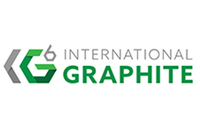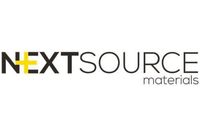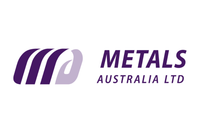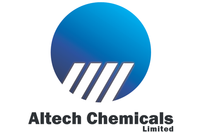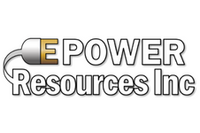Quebec's Potential as Key Player in North American — and European — Graphite Supply Chains

Quebec’s coastal region makes the Canadian province a supply chain gateway to North American and European markets.
As the world ramps up its electrification efforts to reach global emissions targets, it becomes ever more important to secure domestic supply chains, particularly for the critical minerals needed to support these targets.
Graphite is arguably one of the most critical minerals in the production of electric vehicles. Each electric vehicle contains between 50 and 100 kilograms of the material. And while synthetic graphite has emerged as a potential balm for the looming supply shortage, it likely won't be enough.
To meet energy storage demand, graphite supply needs to increase nearly 500 percent by 2050, according to a World Bank report. As the number of gigafactories in North America continues to rise, supplying the raw materials they require will become increasingly untenable with the current state of the graphite supply market. We need to boost domestic mineral production, starting with exploration.
As the site of North America's only producing graphite mine, Quebec, Canada, has the potential to play a crucial role in securing and developing the region's graphite supply. Moreover, exploration in the area shows considerable promise, with the possibility of multiple new discoveries.
Driving battery production, electric cars and more
For all the talk of battery metals like lithium and cobalt, it's easy to forget that none of them could function without graphite. The material makes up roughly 45 percent of each battery cell and roughly 28 percent of the entire battery. It's by far the largest component in both volume and mass.
It's not just in the batteries themselves that graphite is a necessary material, either. The automotive industry also uses it for a wide range of other functions, including gaskets, clutch materials and brake linings. We not only need graphite to successfully transition to electric vehicles, we need graphite for operable motor vehicles in the first place.
An all-too-familiar market outlook
Unfortunately, the current global graphite market paints a very familiar picture for anyone who's been paying attention to critical minerals production. China holds the top spot by a staggering margin, having produced 850,000 metric tons (MT) of graphite in 2022. The second largest producer, Madagascar, only produced 170,000 MT.
Canada, meanwhile, was tied for sixth place with Russia with output of 15,000 MT. The US did not even place in the top 10.
Much has already been written about the risks of allowing China to continue dominating global supply; suffice it to say that it is in North America's best interest to establish its own domestic graphite supply chain and reduce its reliance on China for materials. And with multiple gigafactories under construction throughout both Canada and the US, it's only a matter of time before demand vastly outstrips domestic supply.
Quebec and the North American graphite market
Quebec is widely regarded as one of the most attractive mining jurisdictions in the world, and it ranked eighth globally last year by the Fraser Institute's survey. Quebec's lithium mining sector is already thriving, owing to the province's developed infrastructure, experienced workforce and mining-friendly government. Graphite could be going down the exact same road.
Currently, Quebec is the site of the only significant operating graphite mine in North America, the Lac des Iles mine owned and operated by Northern Graphite (TSXV:NGC,OTCQB:NGPHF). The mine has been in operation for more than 30 years, but its reserves are running low, and it's due to reach the end of life at some point in the next two to three years.
Fortunately, there are many exploration and development companies ready and waiting to step up and fill the void that will be left by Lac des Iles.
Earlier this year, Nouveau Monde Graphite (TSXV:NOU,NYSE:NMG) released a preliminary economic assessment for its Uatnan project. Covering the Lac Guérete graphite deposit in Northeastern Quebec, Uatnan is currently one of the world's largest in-development graphite projects. The potential mine has targeted production of roughly 500,000 MT of graphite concentrate per annum over a 24 year life of mine.
Nouveau Monde shares joint ownership of Lac Guérete with Mason Graphite (TSXV:LLG,OTCQX:MGPHF), itself one of the top graphite stocks in Canada.
There's also Volt Carbon Technologies (TSXV:VCT,OTCQV:TORVF), a junior resource company with graphite properties in both Ontario and Quebec. Volt Carbon's Quebec property, Lochabar, covers roughly 541 hectares. The company has suggested that it plans to use its proprietary air classification process to develop the project in the coming years.
Finally, there is E-Power Resources (CSE:EPR), which owns the Tetepisca graphite property consisting of 230 claims covering 12,620 hectares in Quebec's North Shore region. The project is located in the high grade Tetepisca graphite district, in which E-Power is the largest mineral claim holder. The company is currently performing a 3,000 meter drill program on its Tetepisca project to determine which of its top graphite targets will be the subject of resource definition drilling to commence later this year.
Tetepisca's location is just as promising as its graphite potential. The project is situated near Baie-Comeau, a major port at the mouth of the St Lawrence River. In addition to having maritime links to European ports, E-Power has easy ground transport links to the rest of North America. In other words, Tetepisca's location makes it geographically feasible to establish a graphite supply chain for both the North American and the European markets.
Investor takeaway
Even though it doesn't get quite as much press as some other critical minerals, graphite is every bit as important to the electric vehicle transition. With gigafactories opening throughout North America and the only graphite mine in the continent due to close within the next several years, it's imperative that a new domestic source of graphite is established. Fortunately, there are multiple promising exploration companies operating throughout Quebec.
This INNSpired article is sponsored by E-Power Resources (CSE:EPR). This INNSpired article provides information which was sourced by the Investing News Network (INN) and approved by E-Power Resources in order to help investors learn more about the company. E-Power Resources is a client of INN. The company’s campaign fees pay for INN to create and update this INNSpired article.
This INNSpired article was written according to INN editorial standards to educate investors.
INN does not provide investment advice and the information on this profile should not be considered a recommendation to buy or sell any security. INN does not endorse or recommend the business, products, services or securities of any company profiled.
The information contained here is for information purposes only and is not to be construed as an offer or solicitation for the sale or purchase of securities. Readers should conduct their own research for all information publicly available concerning the company. Prior to making any investment decision, it is recommended that readers consult directly with E-Power Resources and seek advice from a qualified investment advisor.

